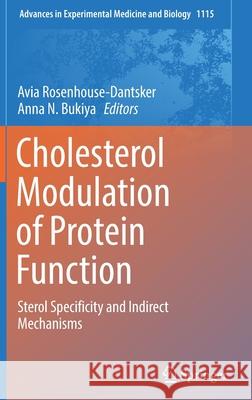Cholesterol Modulation of Protein Function: Sterol Specificity and Indirect Mechanisms » książka
topmenu
Cholesterol Modulation of Protein Function: Sterol Specificity and Indirect Mechanisms
ISBN-13: 9783030042776 / Angielski / Twarda / 2019 / 197 str.
Kategorie:
Wydawca:
Springer
Seria wydawnicza:
Język:
Angielski
ISBN-13:
9783030042776
Rok wydania:
2019
Wydanie:
2019
Ilość stron:
197
Waga:
0.47 kg
Wymiary:
23.39 x 15.6 x 1.27
Oprawa:
Twarda
Wolumenów:
01
Dodatkowe informacje:
Wydanie ilustrowane











